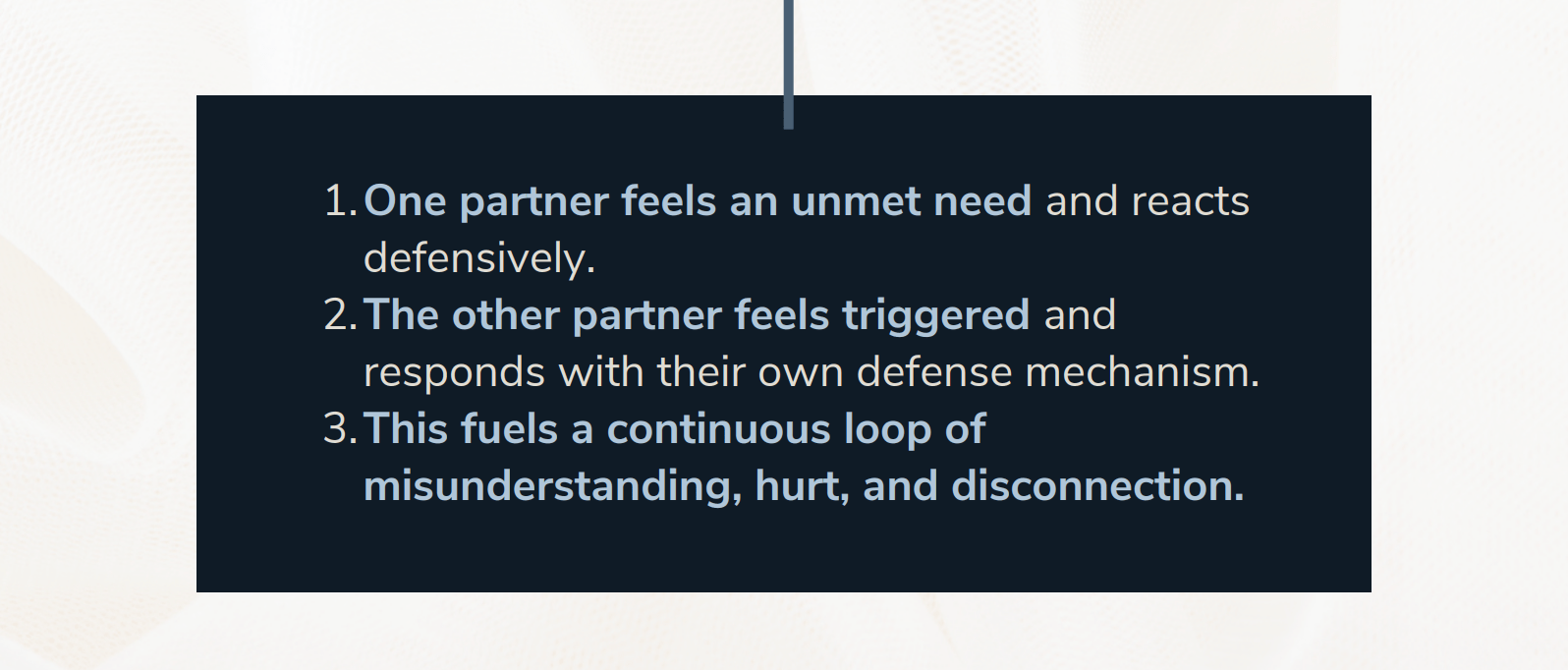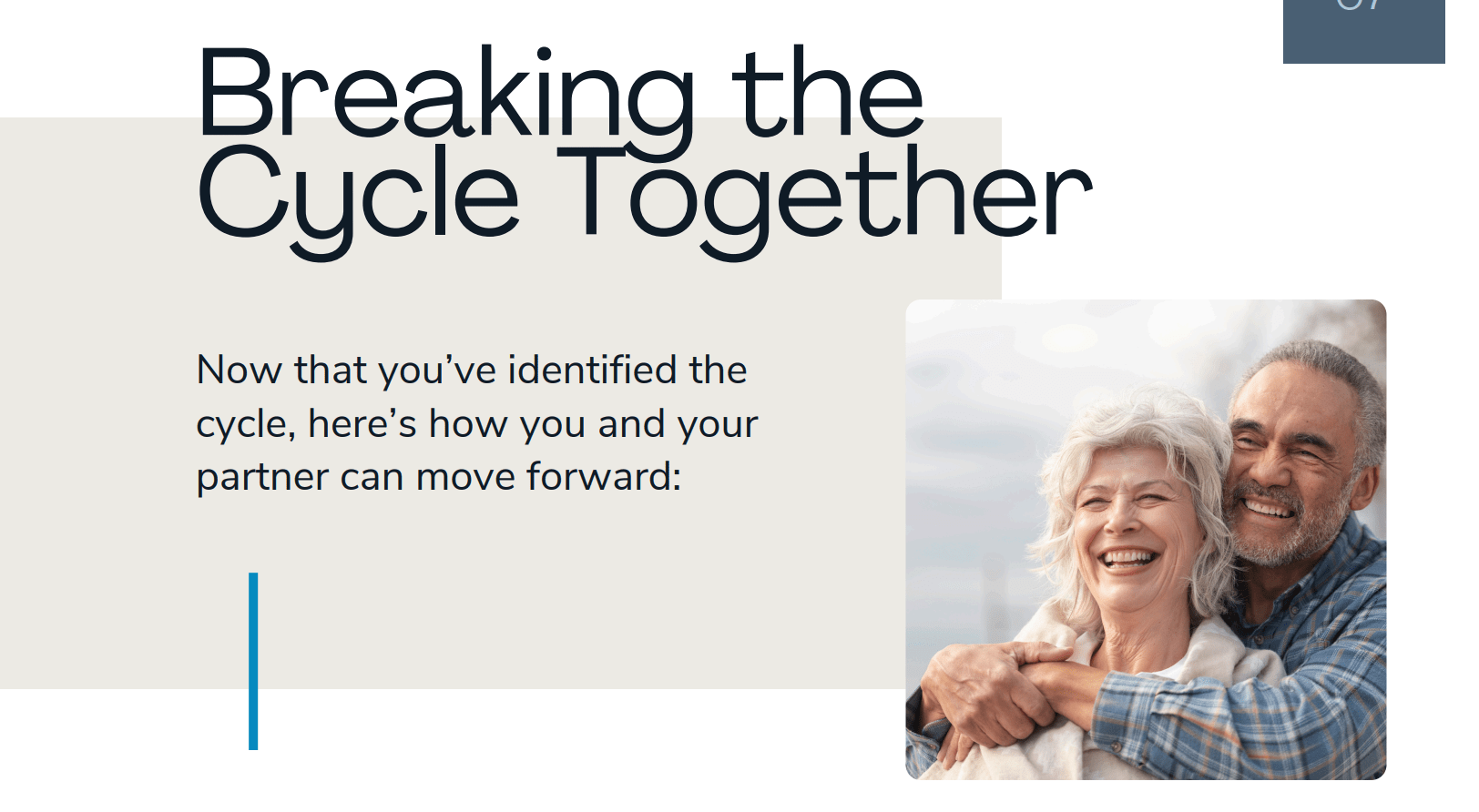Breaking the Cycle: How to Overcome the Couples Conflict Infinity Loop
Every couple experiences conflict, but did you know that the way we respond to conflict is often rooted in deeper emotional needs? The Couples Conflict Infinity Cycle explains why many couples feel stuck in repeating patterns of frustration and misunderstanding.
This guide will help you identify your attachment needs, understand the patterns keeping you stuck, and take practical steps to break free from the cycle—so you and your partner can grow closer rather than further apart.
Understanding the Couples Conflict Infinity Cycle
Our attachment needs—such as acceptance, belonging, comfort, security, and being heard—shape how we communicate and respond to conflict. These needs develop long before we enter a romantic relationship, but they play a significant role in how we interact with our partner.
When our attachment needs aren’t met, we naturally react with defensive strategies to protect ourselves from further hurt. This often creates a repeating cycle, much like an infinity loop:
One partner feels an unmet need and reacts defensively.
The other partner feels triggered and responds with their own defense mechanism.
This fuels a continuous loop of misunderstanding, hurt, and disconnection.
The key to breaking free from this cycle is recognizing the true desires behind each reaction rather than focusing only on the surface-level conflict. When couples shift their focus from blaming each other to identifying these deeper needs, they can foster greater compassion, empathy, and connection.
The Couples Conflict Infinity Loop, developed by Dr. Scott Woolley
Steps to Identify & Break the Conflict Cycle
Use the reflection prompts below to recognize your patterns and begin shifting your approach to conflict.
A. Identify Your Yearning
💬 What is the most basic thing you want from your partner in this moment?
Example: I yearn to feel loved and important.
B. Name the Feeling When That Need Isn’t Met
💬 What do you feel when your need isn’t met?
Example: I feel sad and insecure when I perceive that I’m not a priority.
(Steps A & B happen internally, as personal reflections.)
C. Recognize Your Defensive Behavior
💬 When my vulnerable feelings are too difficult, I show ____ instead.
Example: I get angry and create distance from you.
D. Identify Self-Perceptions During Conflict
💬 What do I think about myself during these moments?
Example: I feel like I’m always being taken for granted.
E. Recognize How You Perceive Your Partner
💬 What do I believe about my partner in this moment?
Example: You don’t care about me enough to make me a priority.
F. Notice the Behavior That Triggers Your Partner
💬 What do I do to take care of myself that triggers my partner?
Example: I shut down completely, or I pick a fight over something small from the past.
Breaking the Cycle Together
Now that you’ve identified the cycle, here’s how you and your partner can move forward:
Pause & Reflect: Recognize when the cycle is happening and take a step back.
Communicate Openly: Instead of reacting defensively, express your deeper needs.
Practice Empathy: Remember, the cycle—not your partner—is the real enemy.
Seek Connection: Look for opportunities to affirm, comfort, and reassure each other.
Breaking free from the Couples Conflict Infinity Cycle takes practice, but with awareness and intentionality, you and your partner can build a stronger, more connected relationship.






